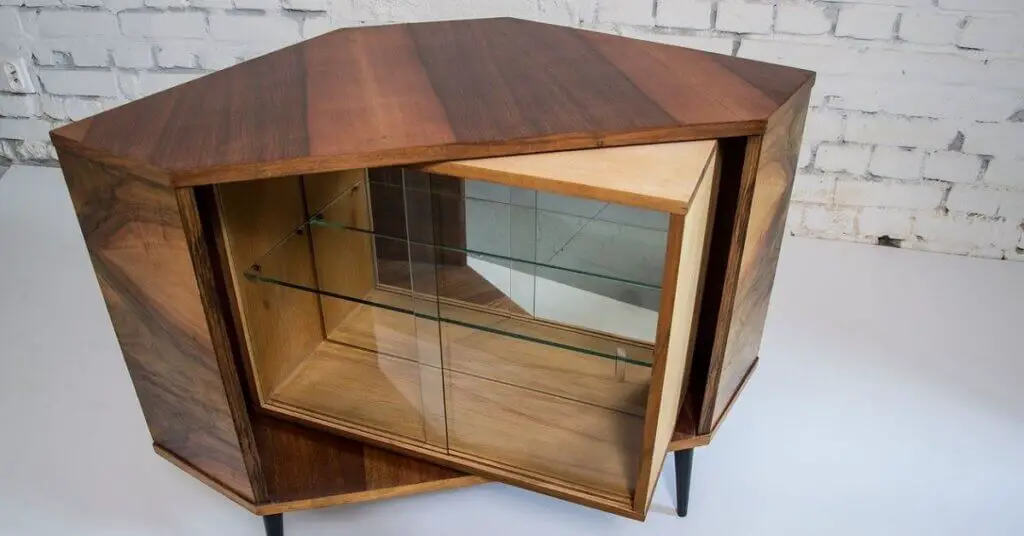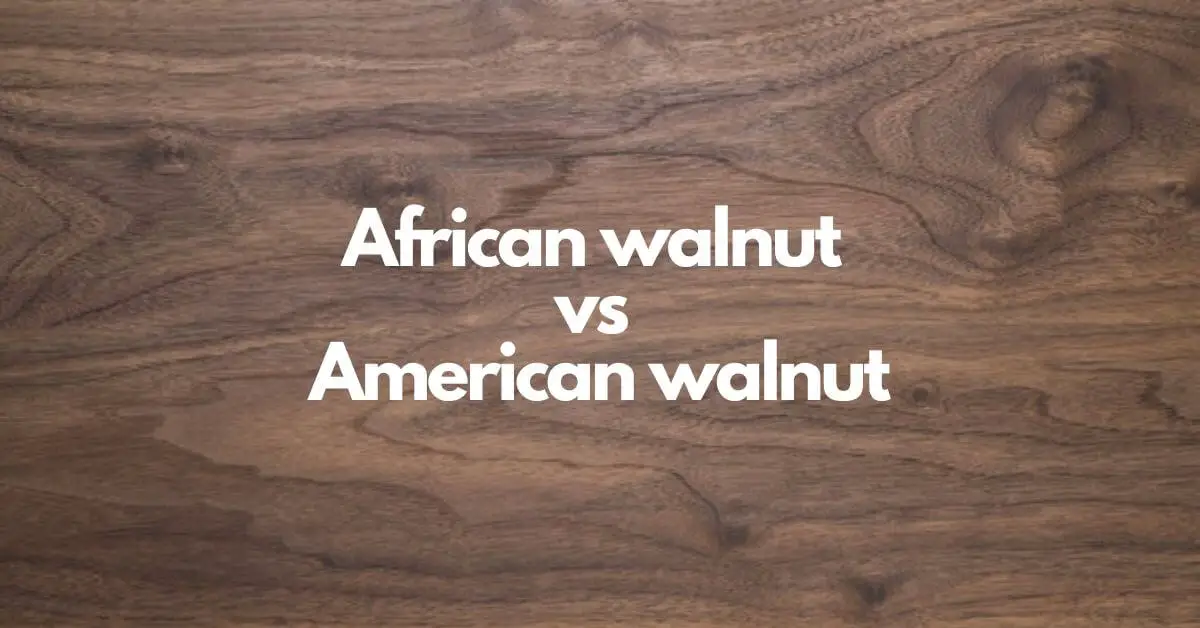African walnut (Lovoa Trichilioides)
African walnut is a moderately strong and durable hardwood, also it has good working properties.
The grain of African walnut is slightly interlocked and has a uniform texture. It is widely used for plywood and veneer sheets.
African walnut is not related to true walnuts in the Juglans genus But is very close to the mahogany wood.
The African walnut is a large-sized evergreen tree and can grow up to 100-150 ft tall. It is a very dense and shady tree.
American walnut (Juglans Nigra)
American walnut is a relatively strong, stable, and highly durable wood. It is very popular in the United States for furniture work.
American walnut (Juglans nigra), also called eastern black walnut and Black walnut. It’s all the same So does not get confused about its name.
The American walnut is the most valuable and unique wood. Its natural dark brown color looks great even without finishing.
The American walnut is a medium to large-sized tree. A healthy tree can grow up to 100-120 ft tall. American Walnut trees are grown both for lumber and food.
African Walnut vs American Walnut
| # | African walnut | American walnut |
| Scientific name | Lovoa trichilioides | Juglans nigra |
| Native to | West tropical Africa | Eastern United States |
| Tree Height | 100-150 ft (30-46 m) tall | 100-120 ft (30-37 m) tall |
| Wood Color | golden yellow to reddish brown | dark chocolate brown |
| Rot-resistant | Not rot-resistant | Durable but not rot-resistant |
| Janka Hardness | 940 lbf (4,180 N) | 1,010 lbf (4,490 N) |
| Workability | Good | Good |
| Availability | commonly available in veneer form | Very popular and widely available |
| Uses | Veneer, plywood, flooring, furniture, cabinetry, and turned objects. | Furniture, cabinetry, gunstocks, interior paneling, veneer, and other small wooden objects. |
Uses of African walnut and American walnut

Common uses
All species of walnut are durable, heavy, strong, fine-grained, and beautiful wood. Walnut wood is suitable for almost all uses of furniture.
Due to its straight grain and medium, uniform texture, it is widely used for making veneers sheets and plywood. The cost of plywood is less compared to solid walnut.
Walnut plywood is versatile and used for many purposes such as tables, doors, and cupboards.
As we all know walnuts are hardwood, but they can be easily curved and shaped. It is used to make small decorative items.
African Walnut Uses
Walnut hardwoods have always been the preferred choice for flooring. Because of its hardness and strength. African walnut is less prone to getting dents and scratches.
African walnut has beautiful rich brown tones making it very attractive for flooring.
American Walnut (Black Walnut) Uses
The density of American walnut wood is higher than African walnut. The American Walnut is more shock resistant and durable. So It is a great choice for making beautiful Knife handles, rifle stocks, gun grips, and tool handles.
We have many options for interior paneling. But walnut paneling cannot be compared with other wood, because it is good in appearance, durable, and impact-resistant.
American walnut can be good solid decking wood which is more excellent than other decking materials. It requires less maintenance.
Wood color
African Walnut
Heartwood can range from golden yellow to reddish brown while the color of the sapwood is medium yellow to light gray.
Like other hardwood, the color tends to darken upon exposure and with age.
African walnut wood grain is usually straight but can be interlocked. Medium, uniform texture, with a high level of natural luster.
American Walnut
Heartwood can range from a lighter pale brown to a dark chocolate brown. While the sapwood is pale Yellow-gray to nearly white. Heartwood has dark brown streaks that are easily seen.
Generally, American walnuts have straight grain but they can also have irregular grain. The wood has a medium texture and moderate natural luster.
Working with African walnut and American walnut
African walnut and American walnut are very close to each other in workability properties. Generally, both kinds of wood are easy to work with both hand and machine tools. But Interlocking and irregular grains can be a problem.
Walnuts woods are glues, stains, and finishes well, and nail and screw very well.
American Walnut Responds well to steam bending.
Staining Walnut Wood
Walnut is a beautiful wood, It looks beautiful even without a stain. While most of the people like natural Walnut (unstained). But you can do walnut staining if you want.
To get an excellent stain result, it is important that you have to follow the process.
Prepare the Wood Before Staining, Start with hand planing, scraping, and/or sanding. You should use 180 or 220 grit for this process.
Sanding will make wood rougher, allowing more stain to absorb and create a darker color. So do sanding well.
After sanding, clean the wood block thoroughly with a cloth. Make sure that there are no dents and scratches on the wood.
A varnish/oil blend is good on walnuts, You need to apply 2 to 3 coats. Keep enough time gaps between each coat so that the earlier coats can dry well. Do the whole process in a dust-free area.
Rot-resistant
The Walnut woods are hard but do not have rot-resistant properties. So walnut wood is a poor choice for outdoor applications.
African walnut is moderately durable but susceptible to termites or insects attack. Heartwood is resistant to powder post beetles but not sapwood.
American Walnut is rated as extremely durable in terms of decay resistance, But It is also susceptible to insect attack. After the chemical treatment or exterior finishing, it can be used for external use.
Is Walnut Wood Allergic to Humans?
No serious problems have been reported with walnut wood. But there may be common problems like skin, eye, and respiratory irritation.
Usually, any type of wood dust can be harmful to asthma and skin patients. So patients should take precautions against dust when working with any lumber.
Before starting woodworking, cover the exposed parts of your body and put glasses on your eyes.
Availability and Price
Walnut wood is quite expensive and is usually available in the form of veneer. Walnut is widely used as a premium domestic hardwood, so prices are in the high range for domesticated species.
Reference :

